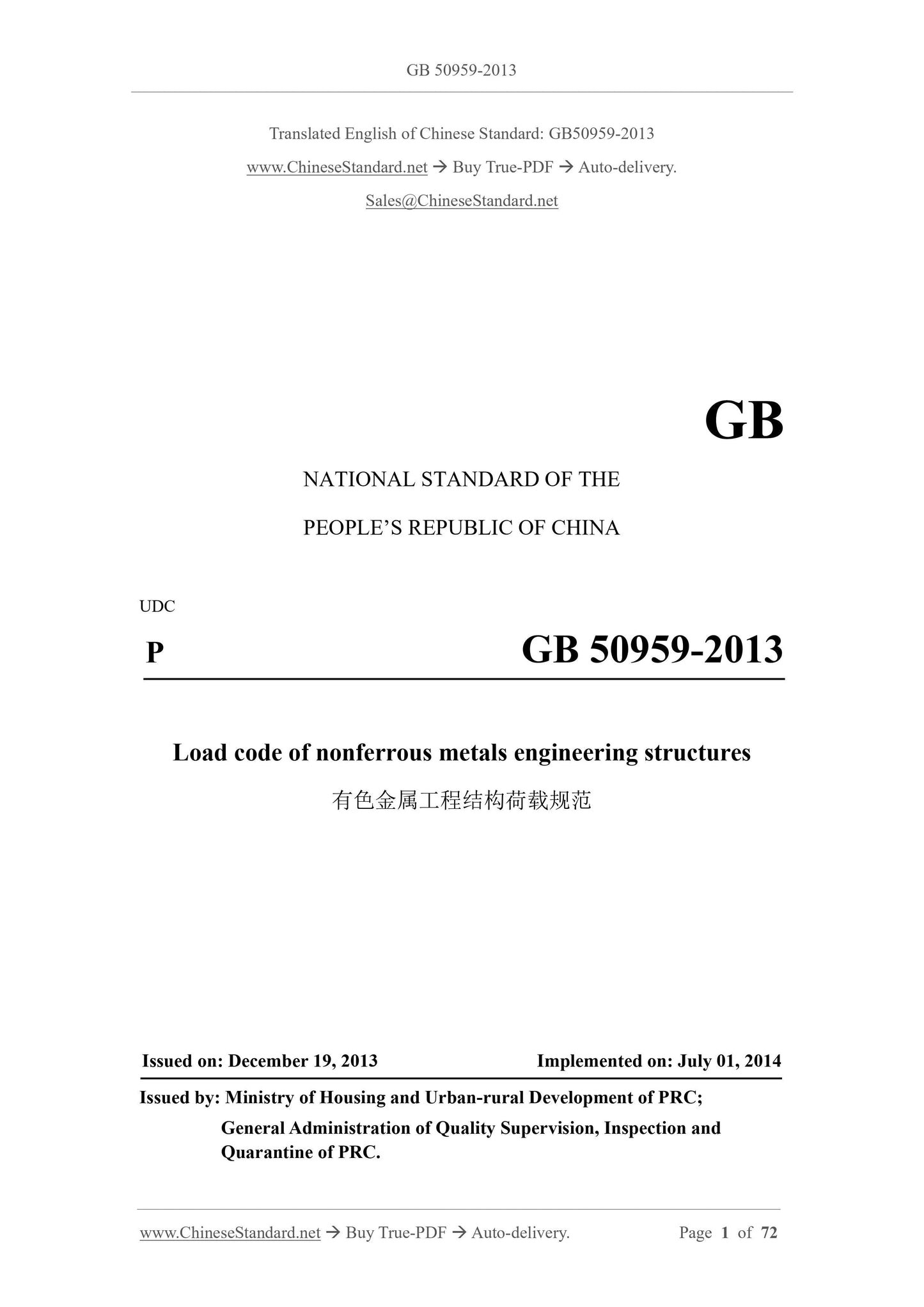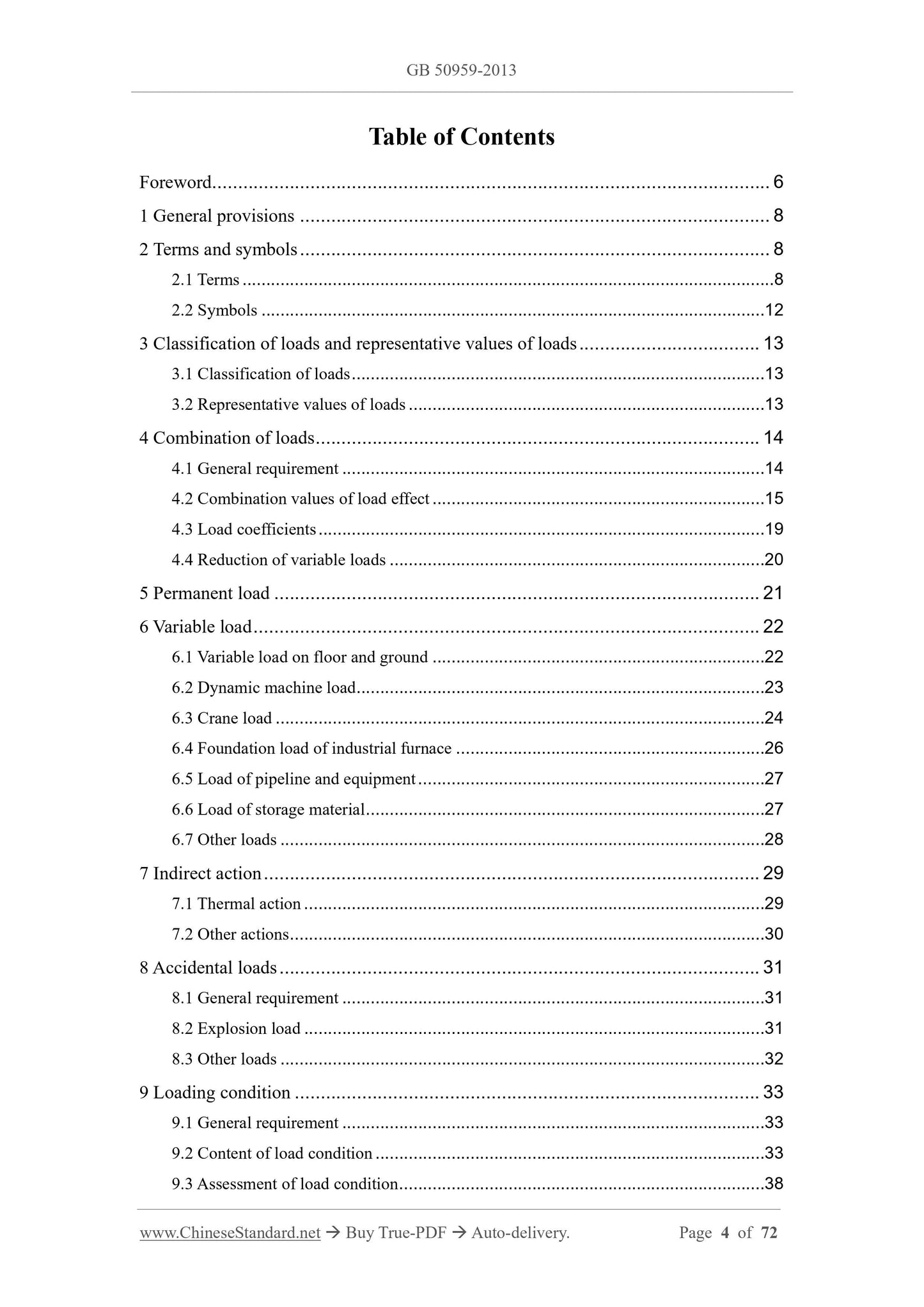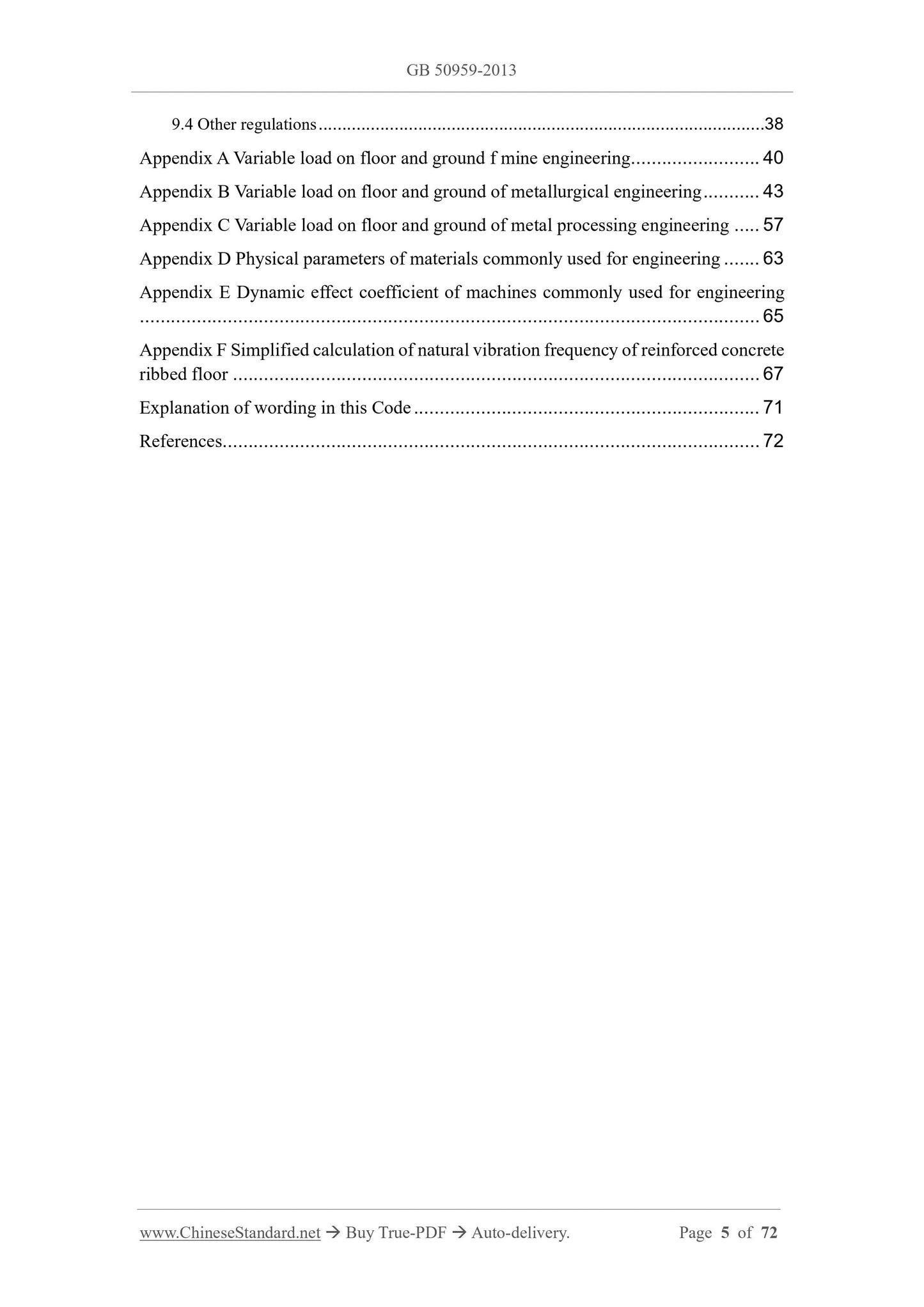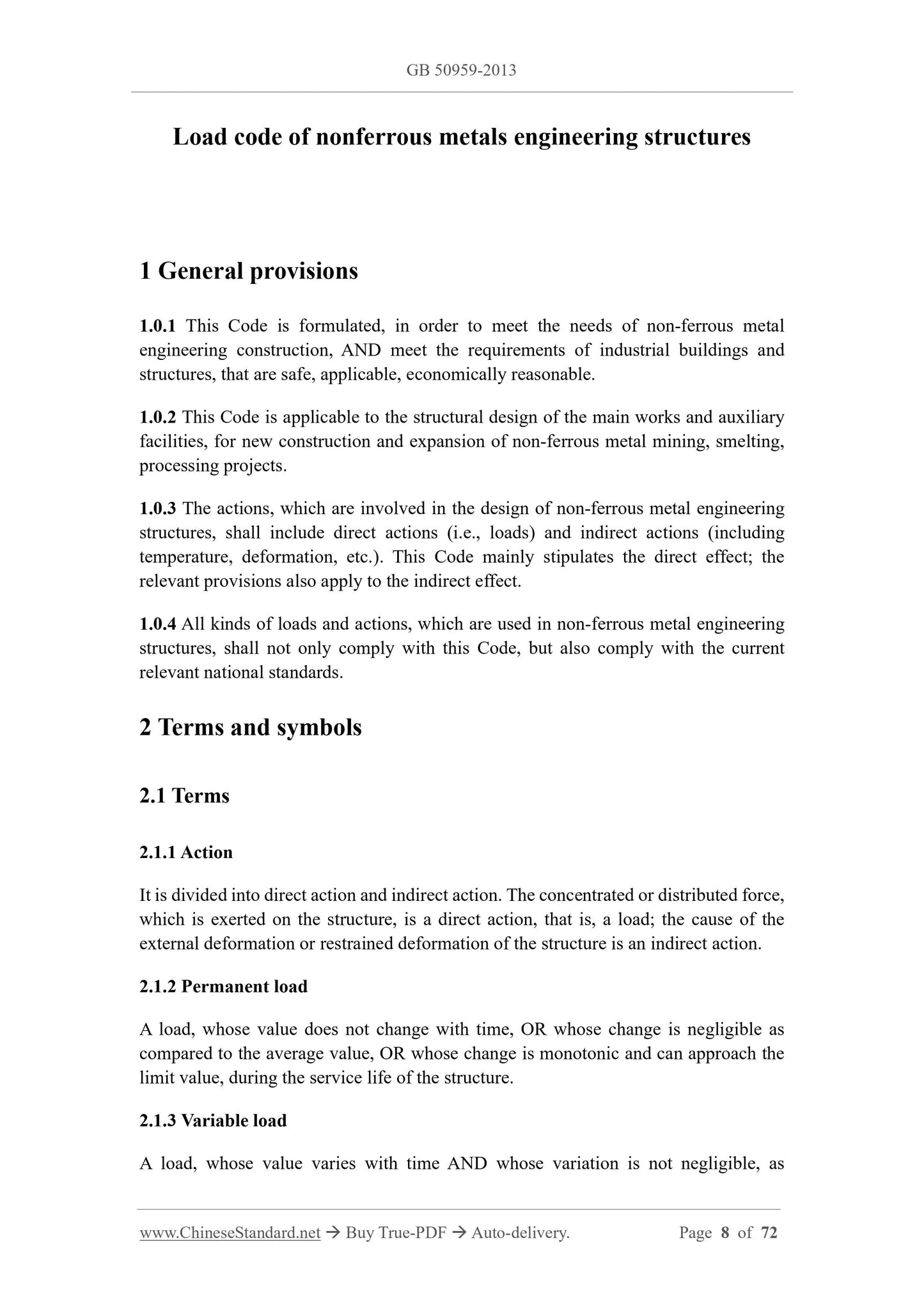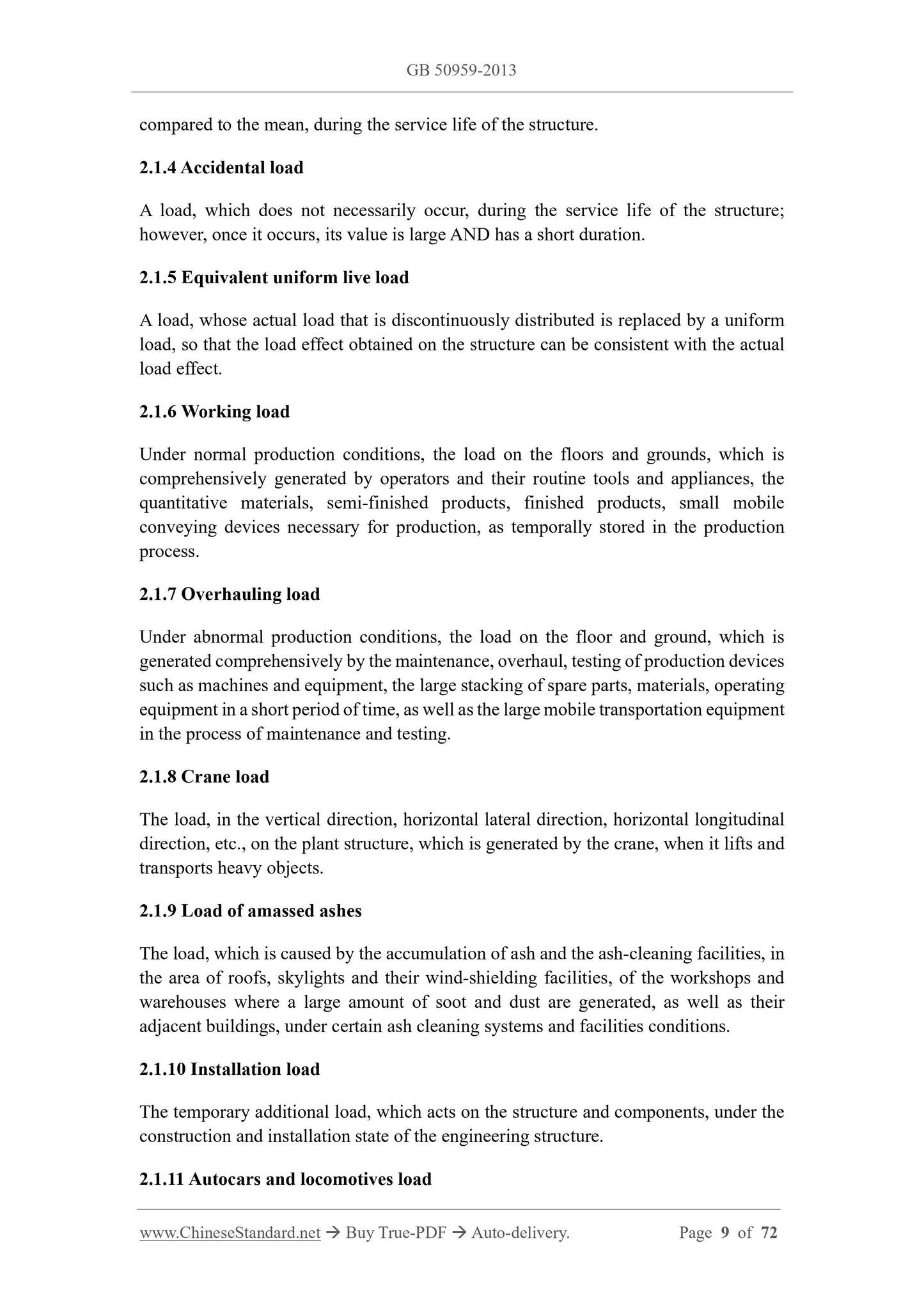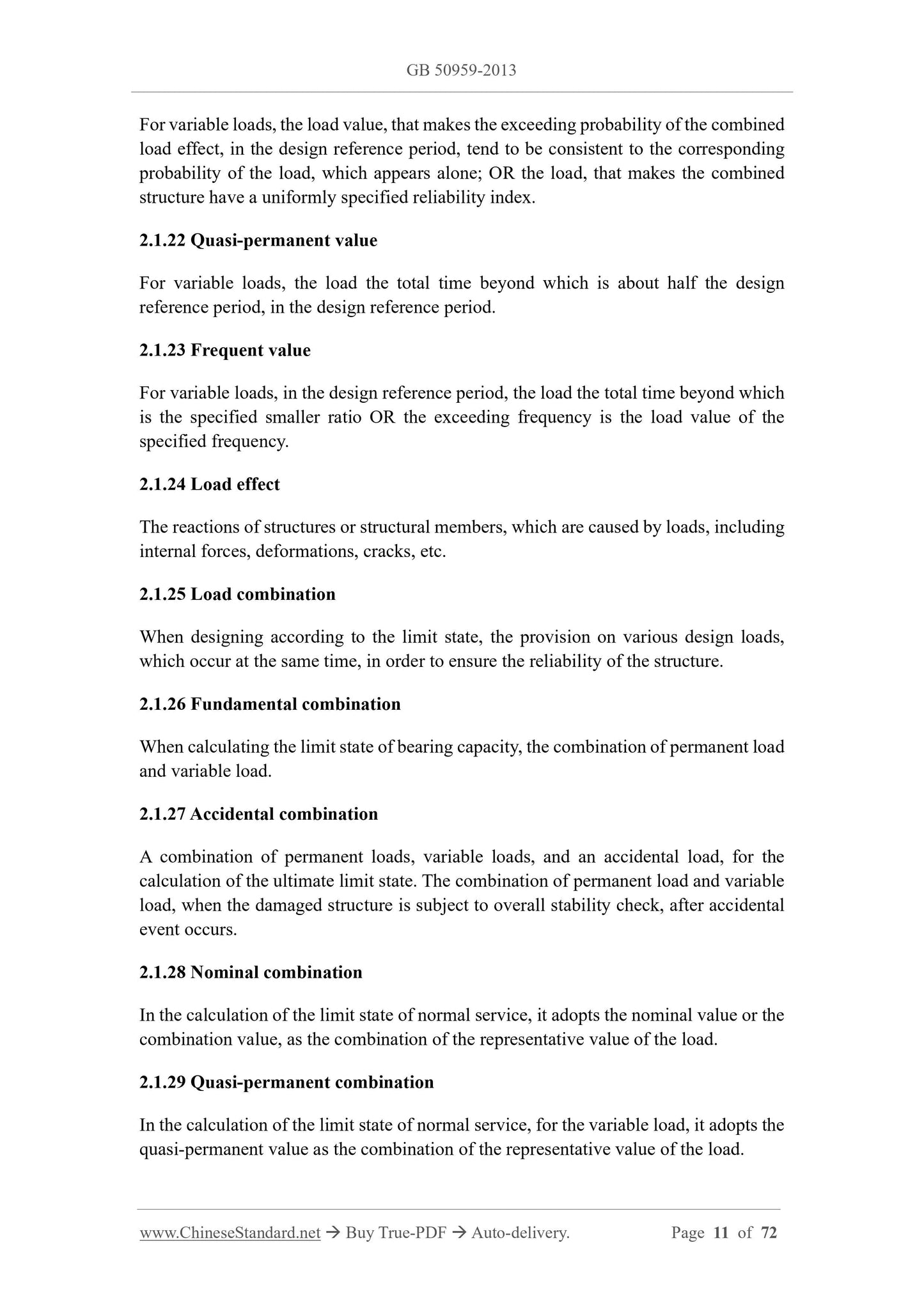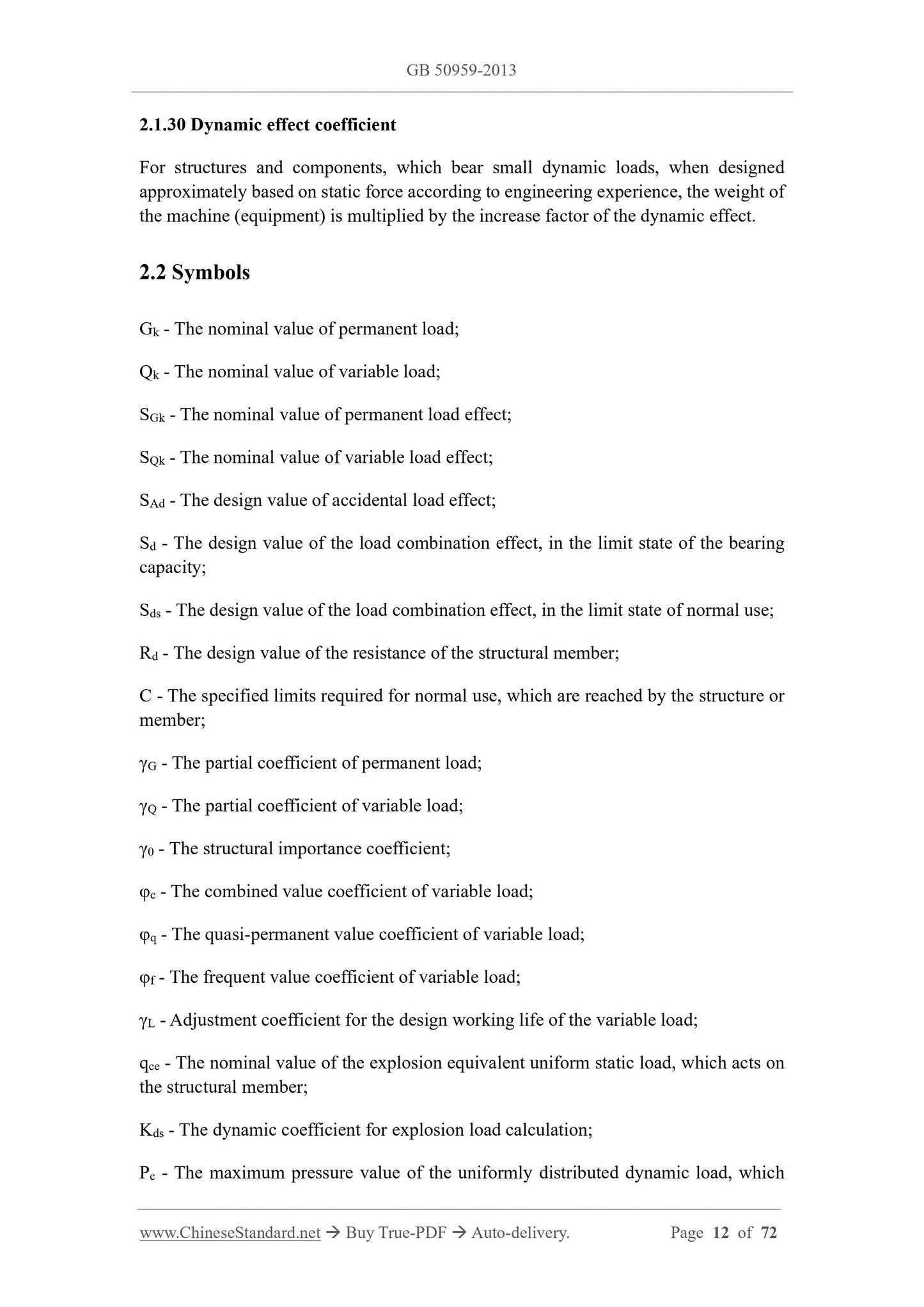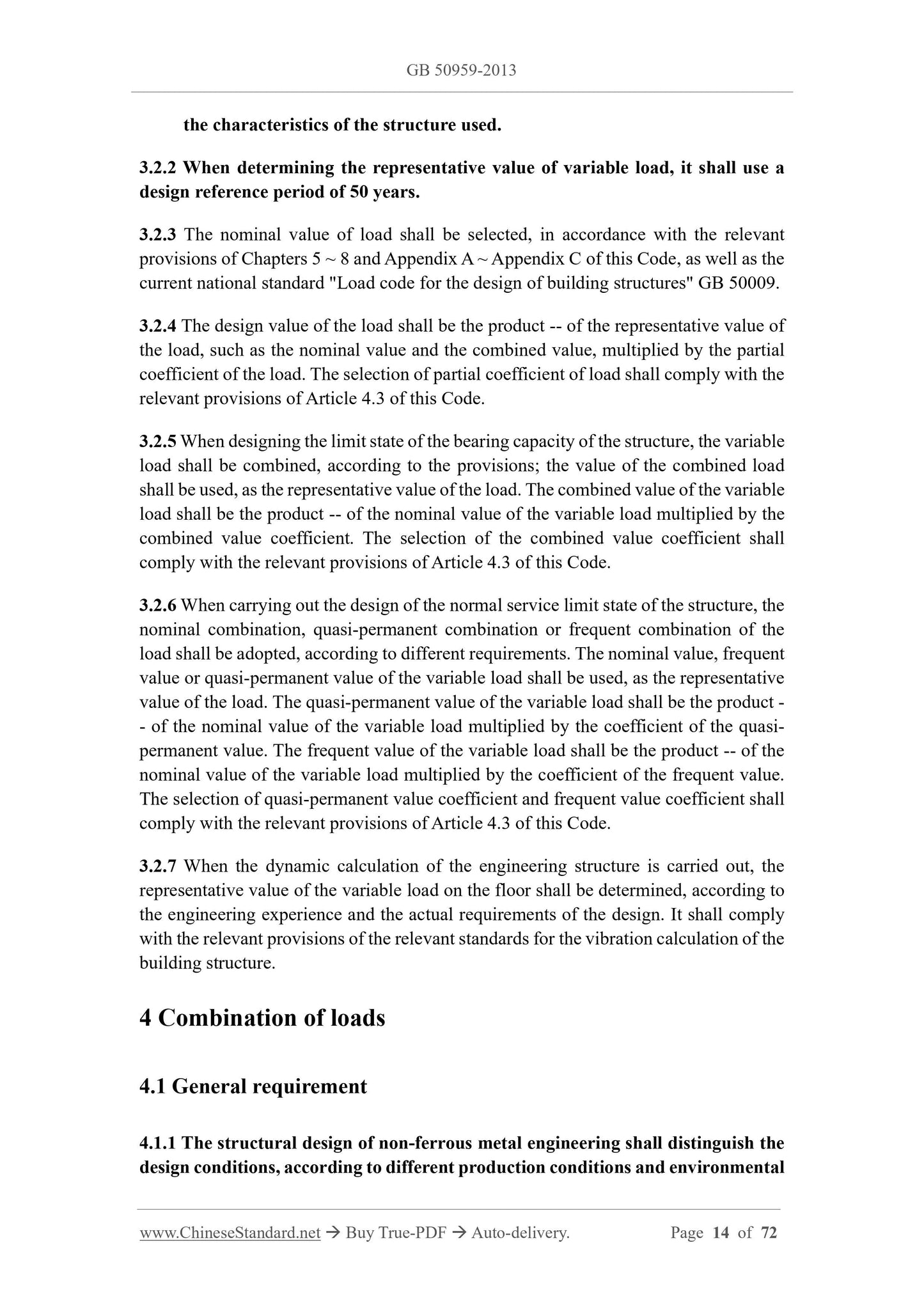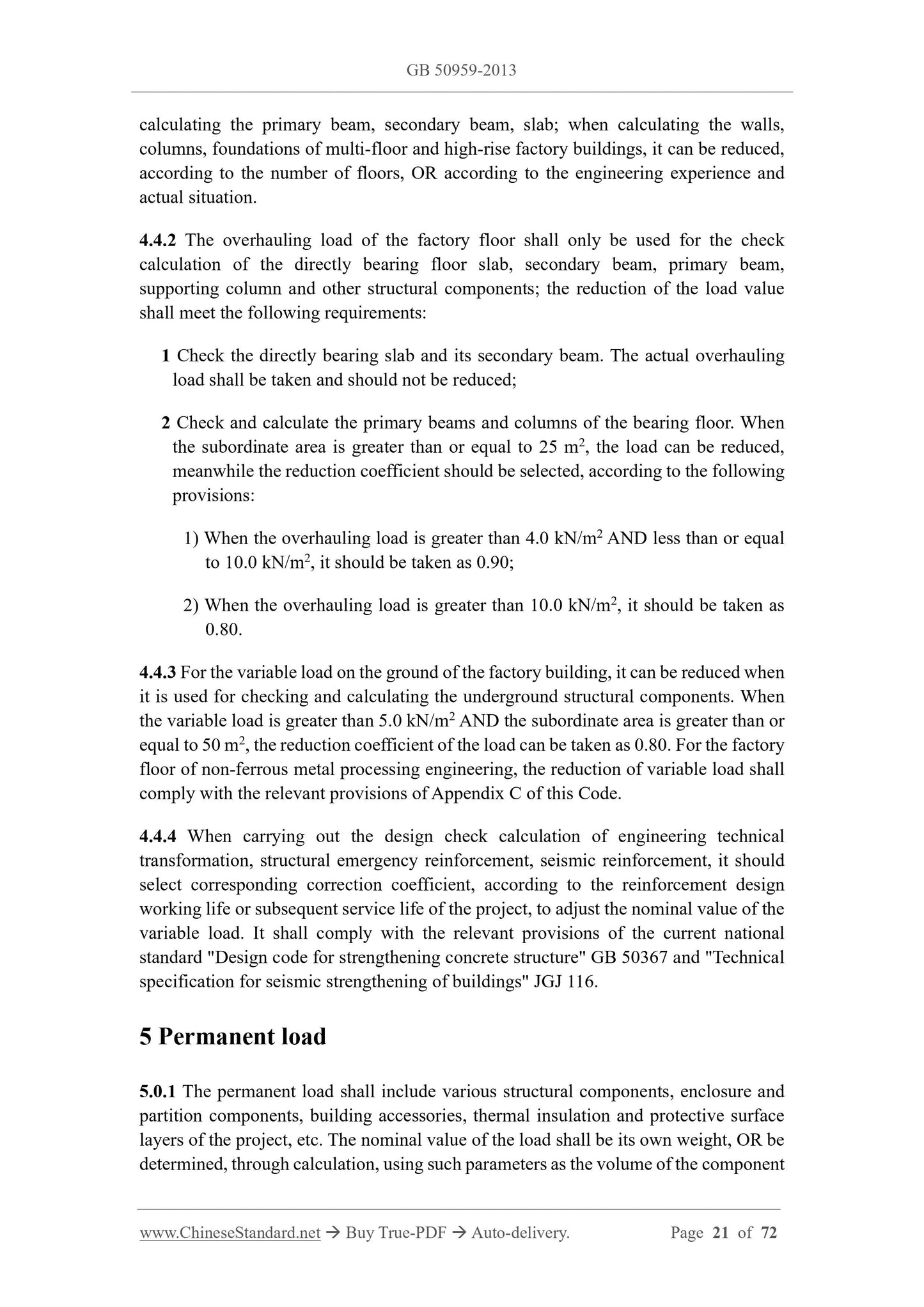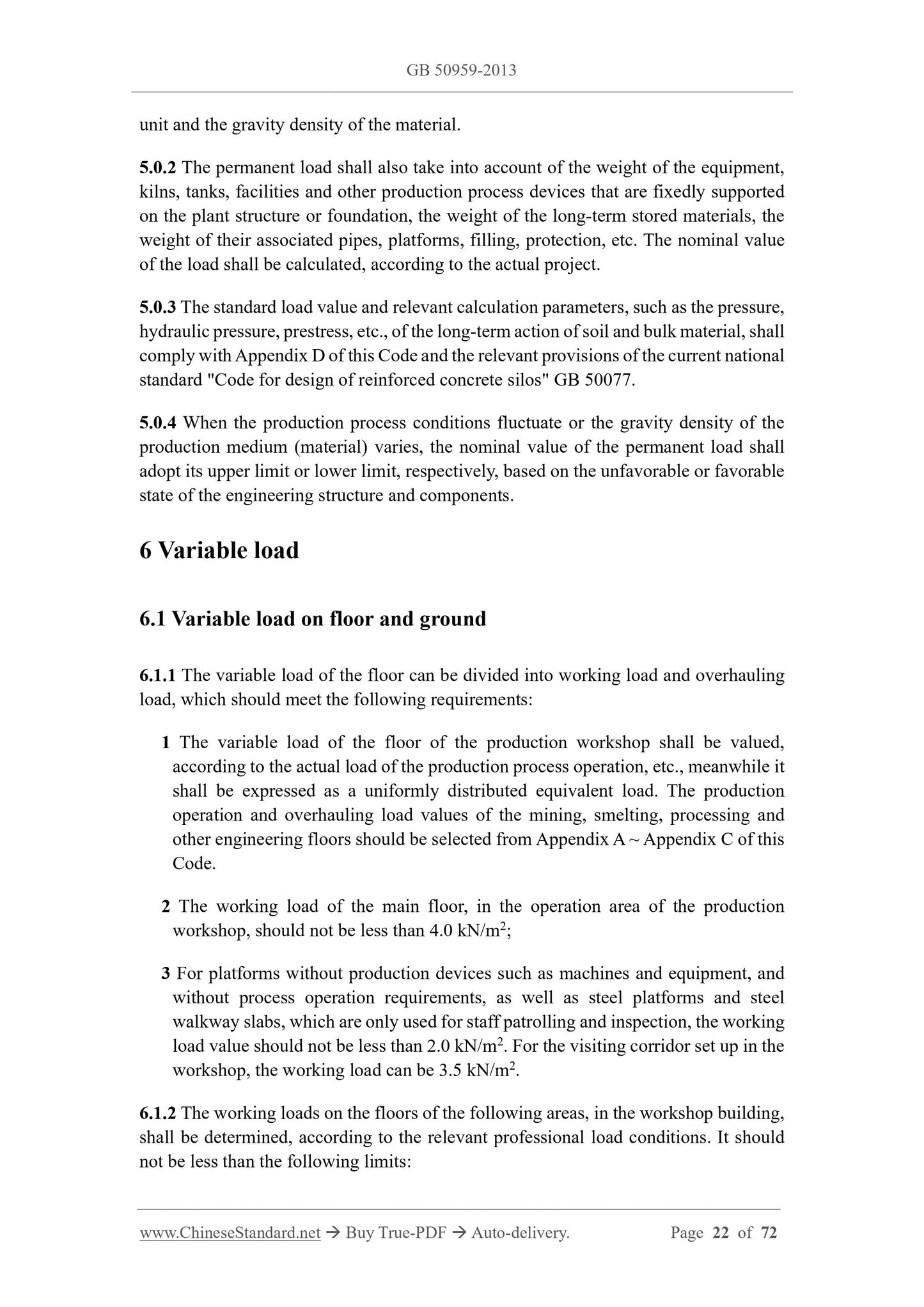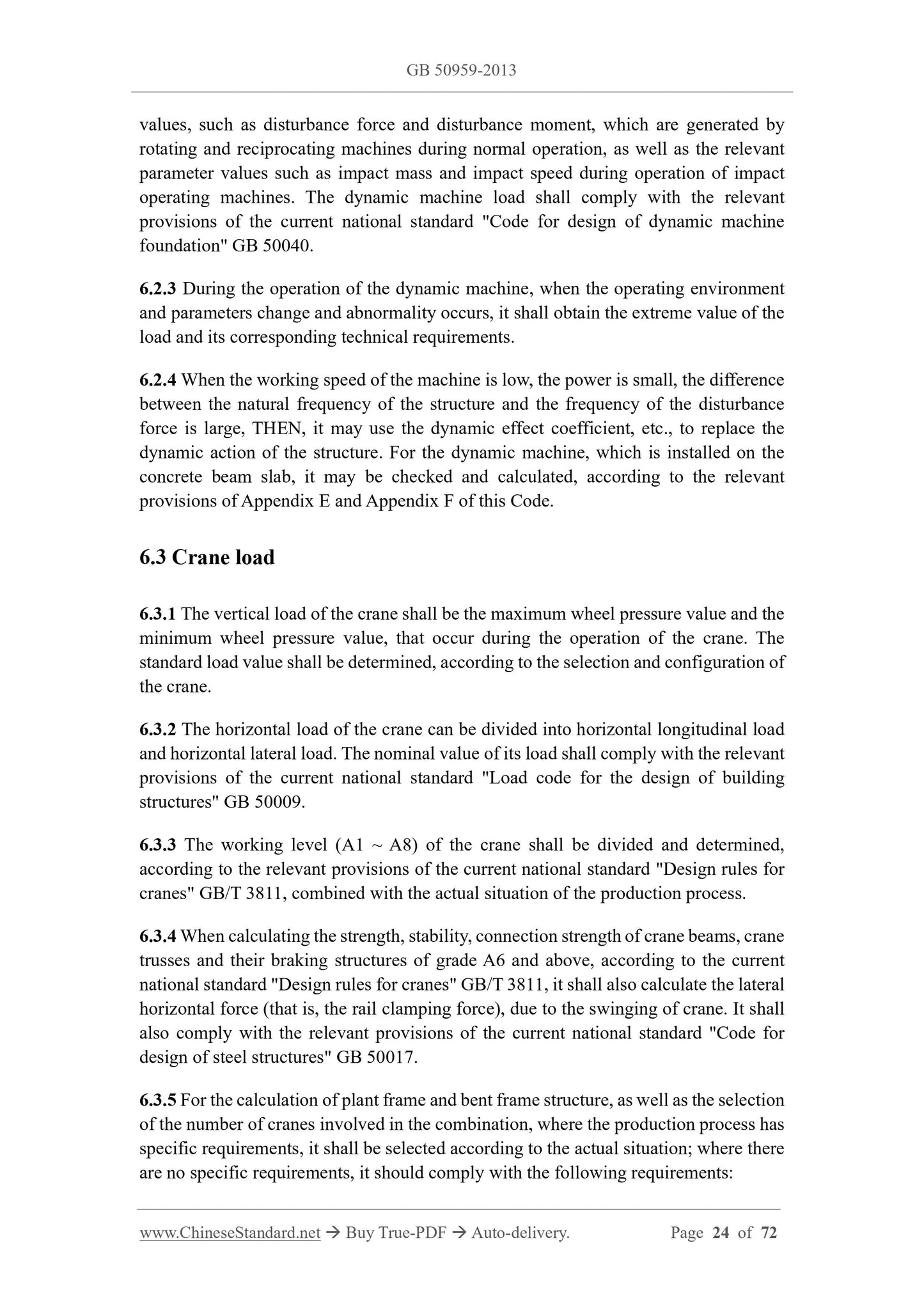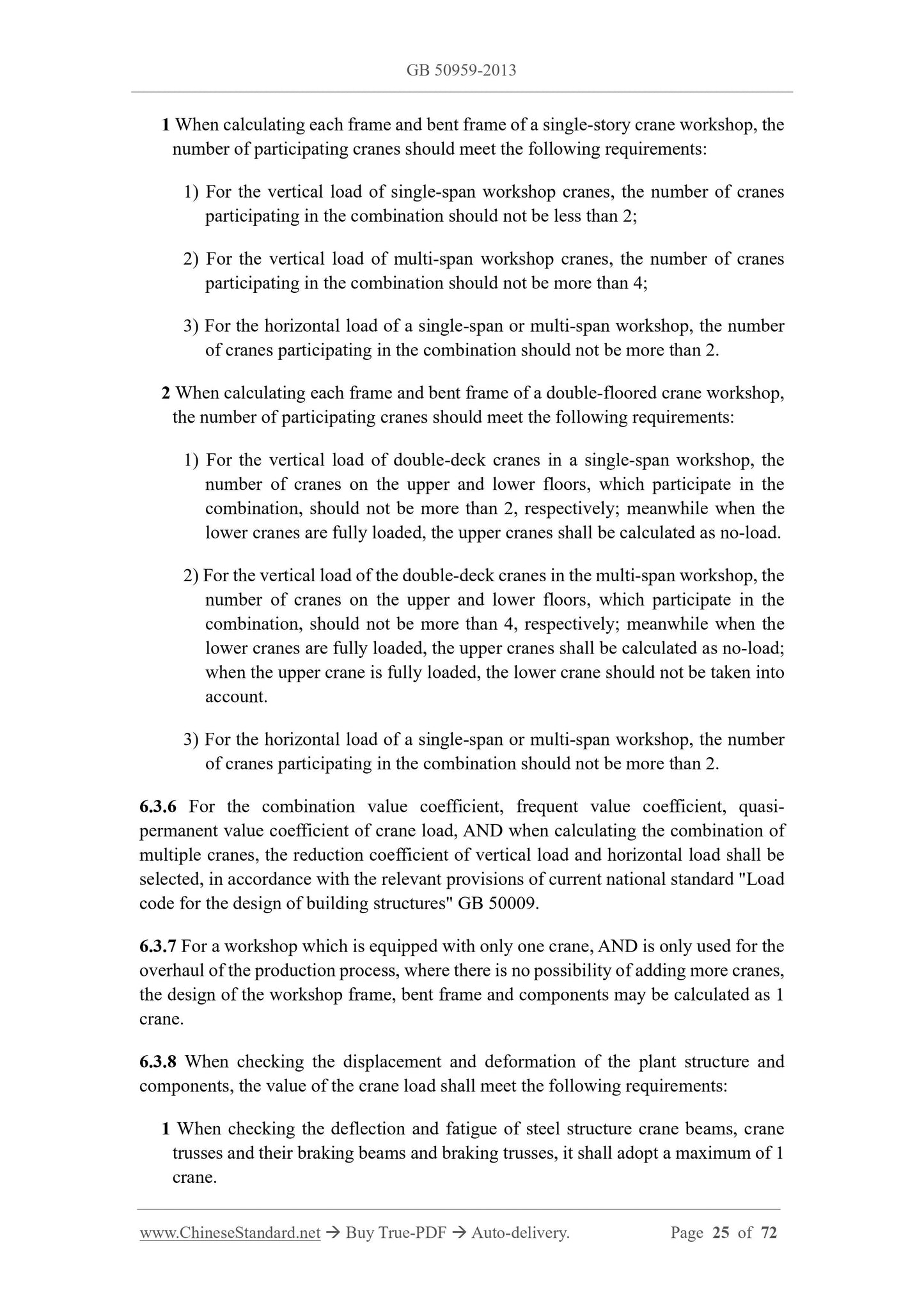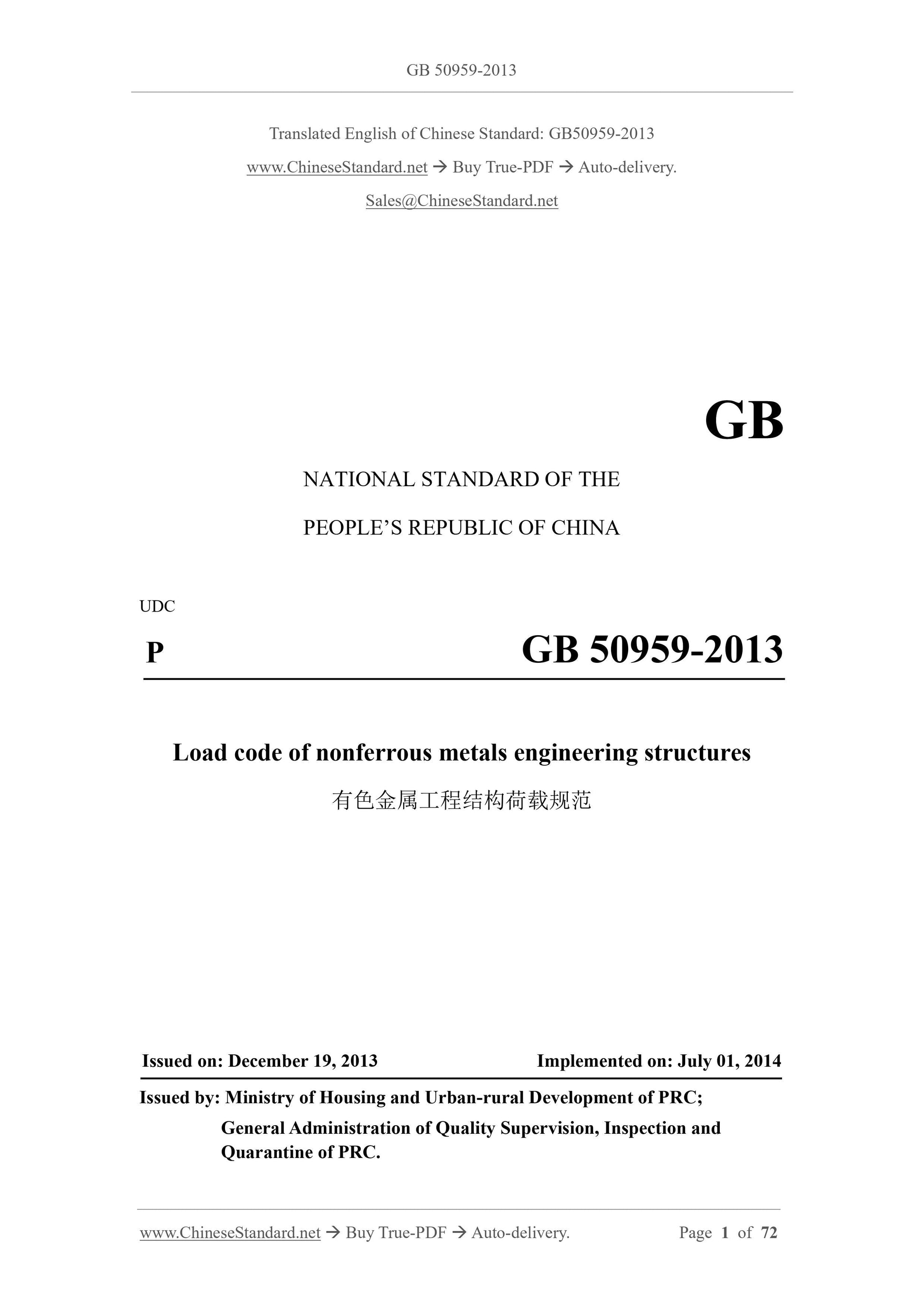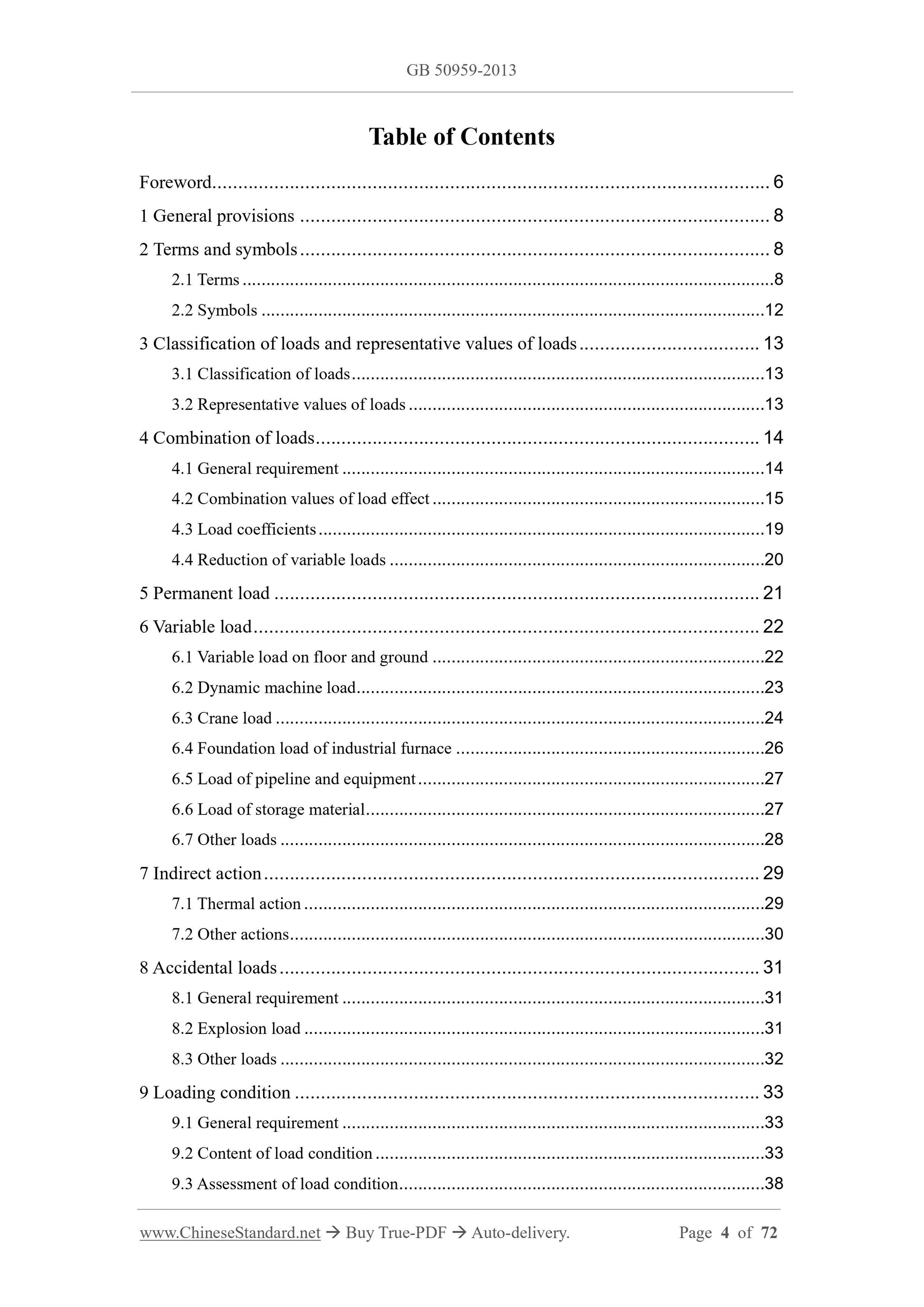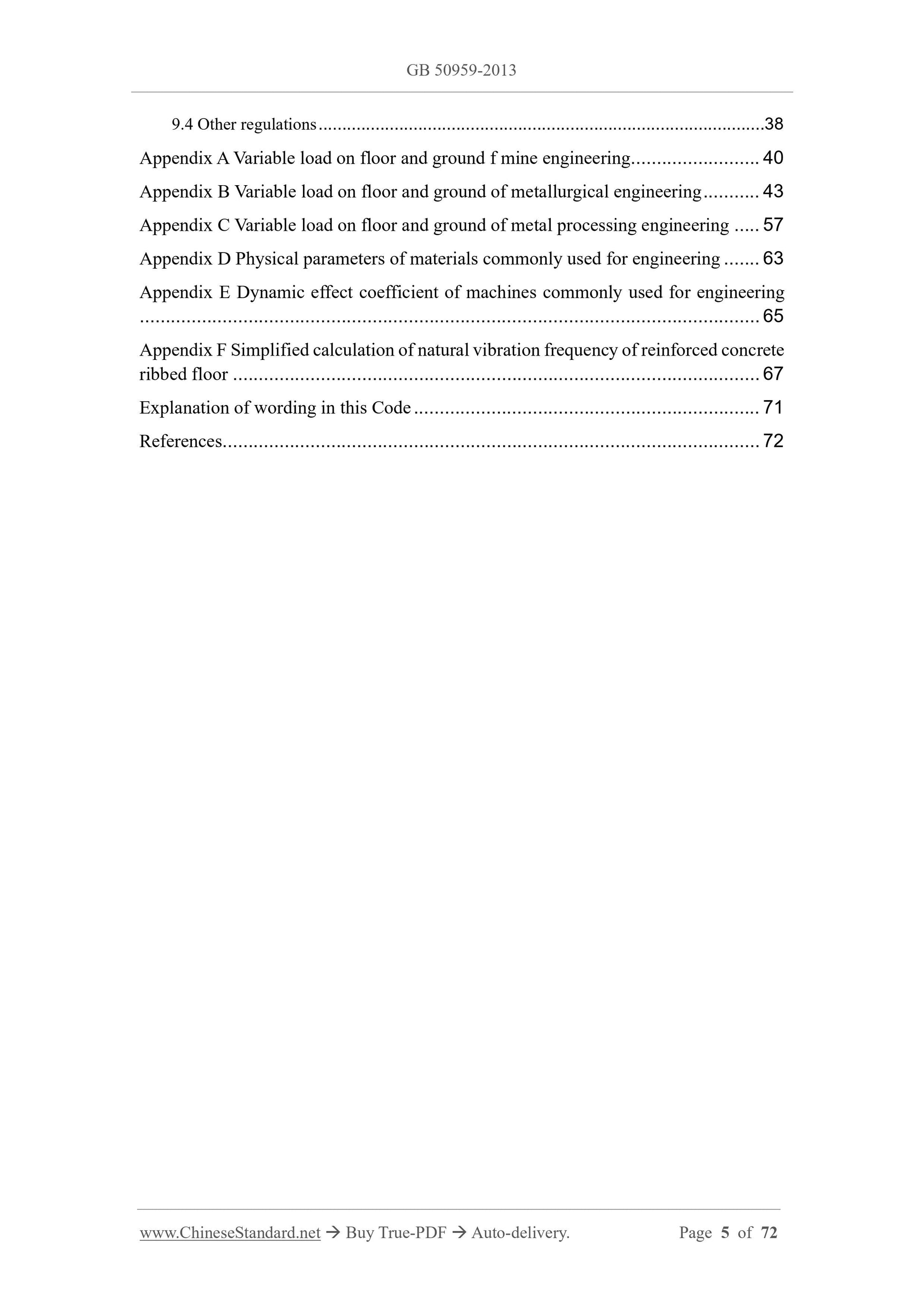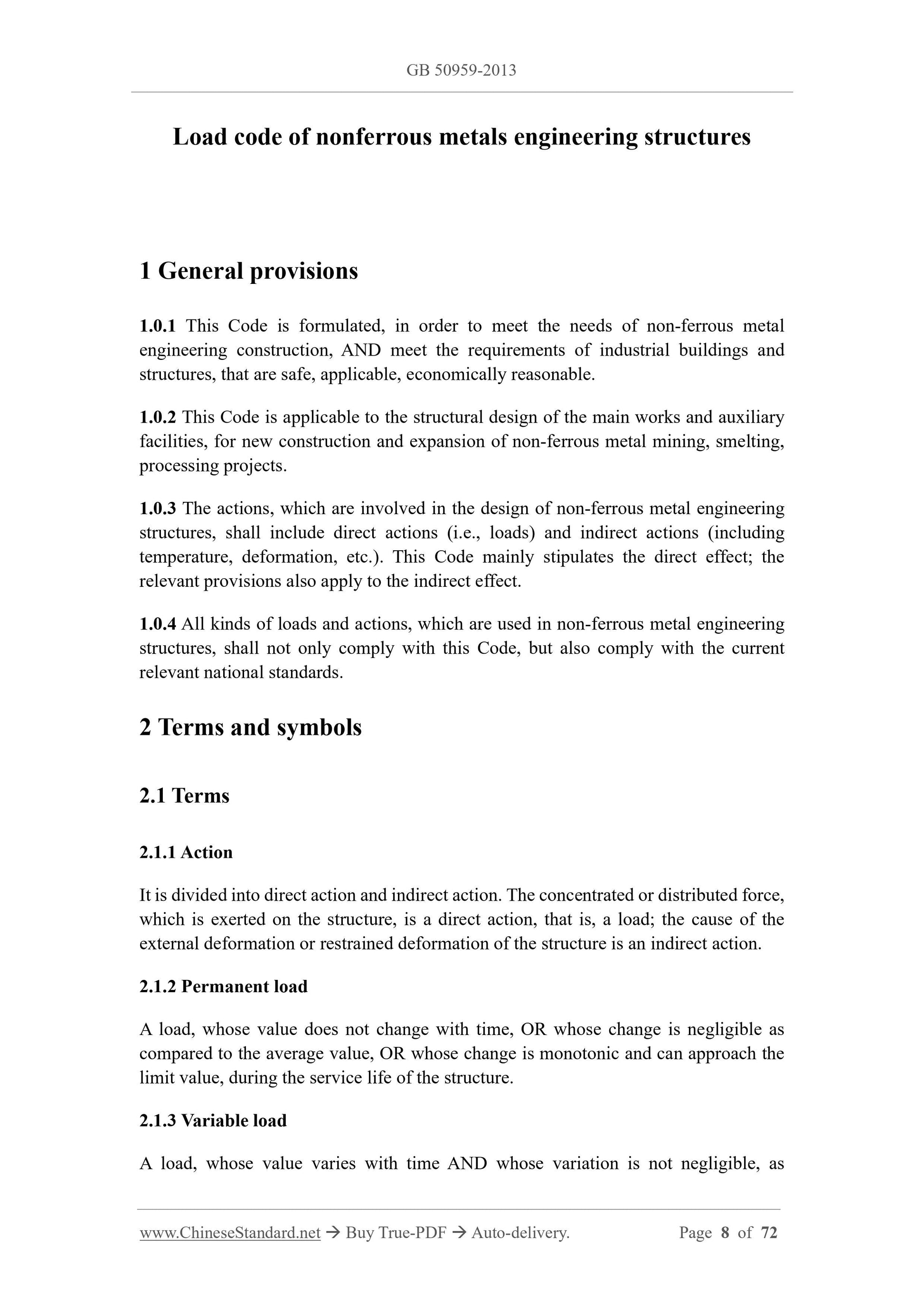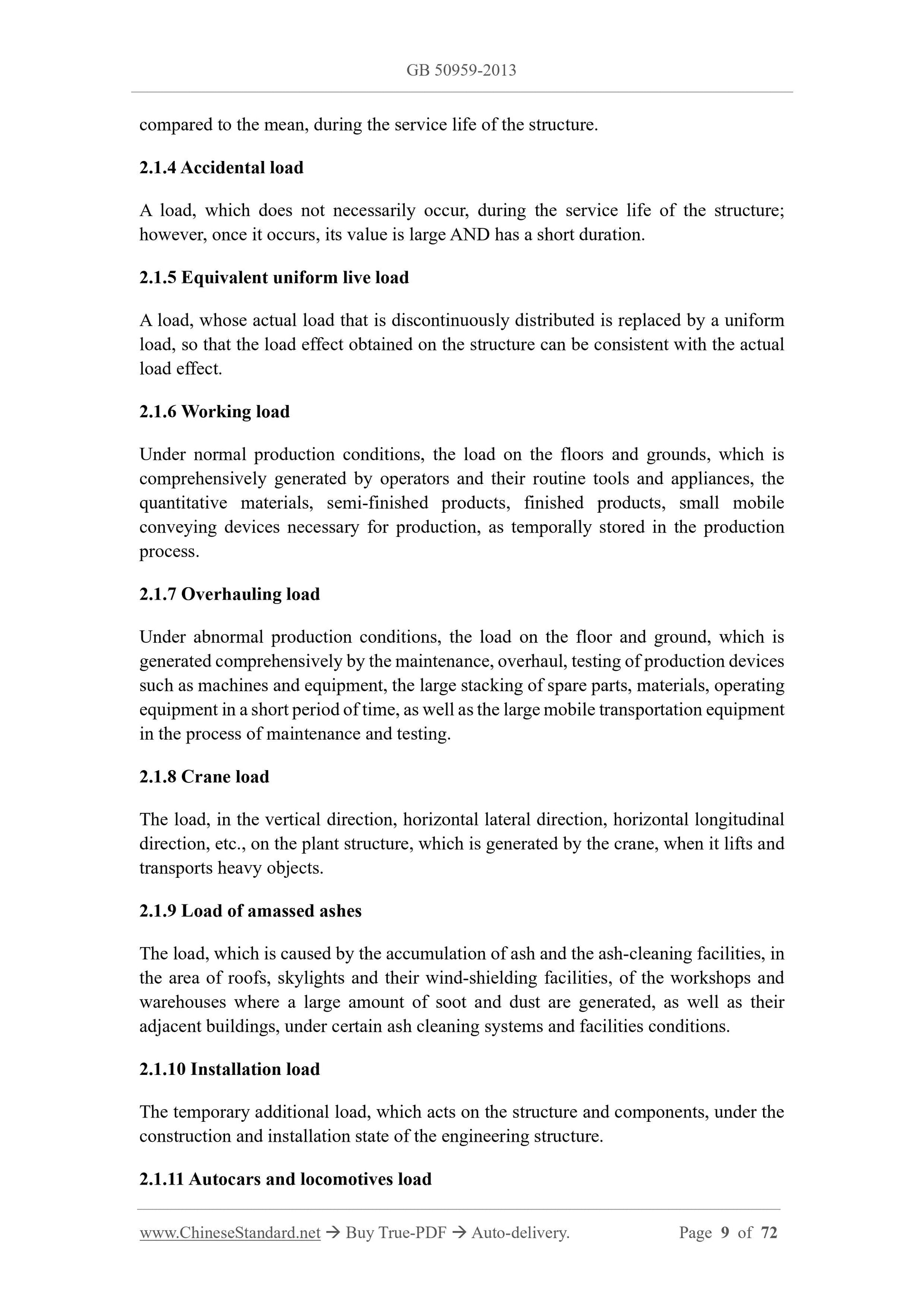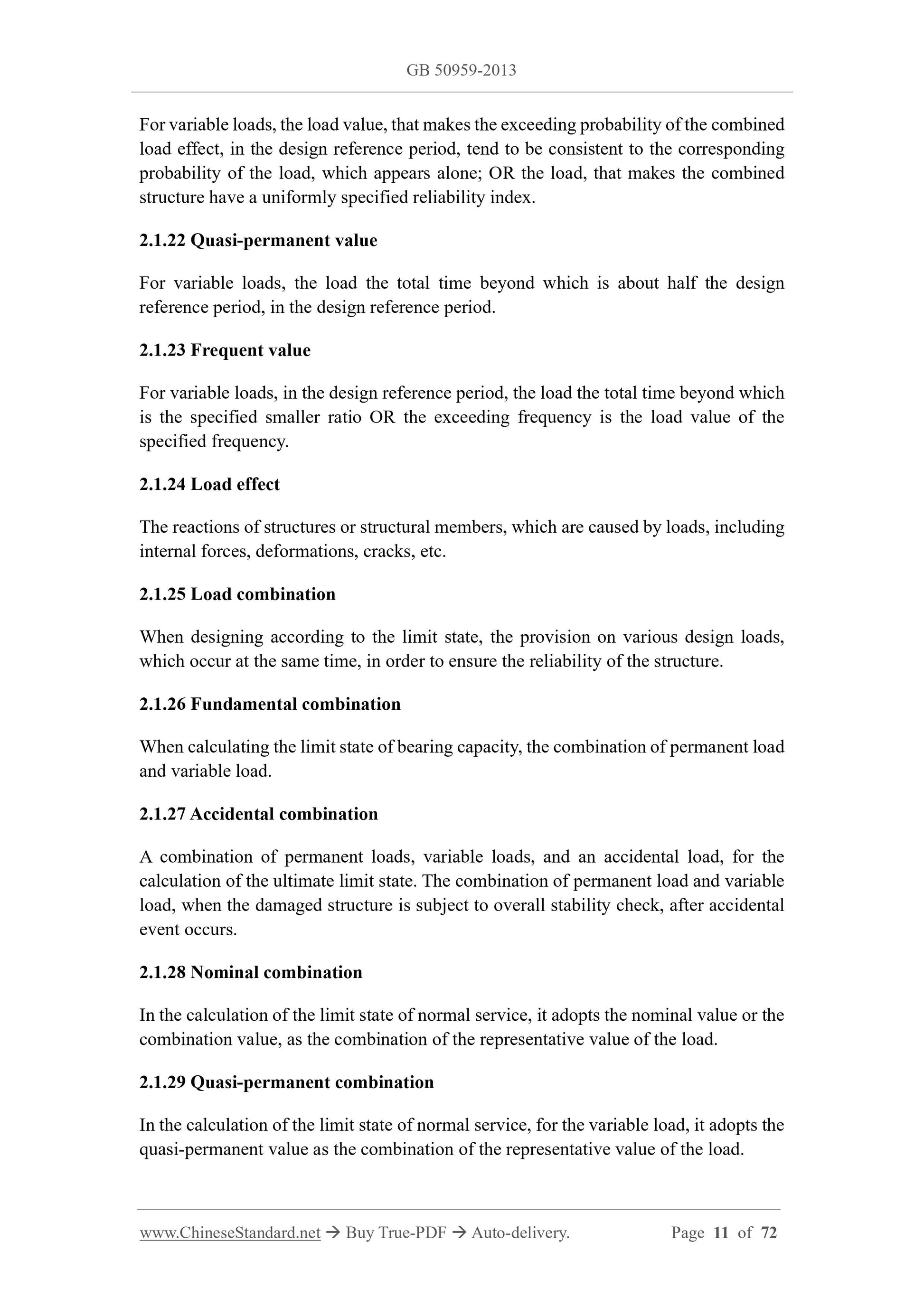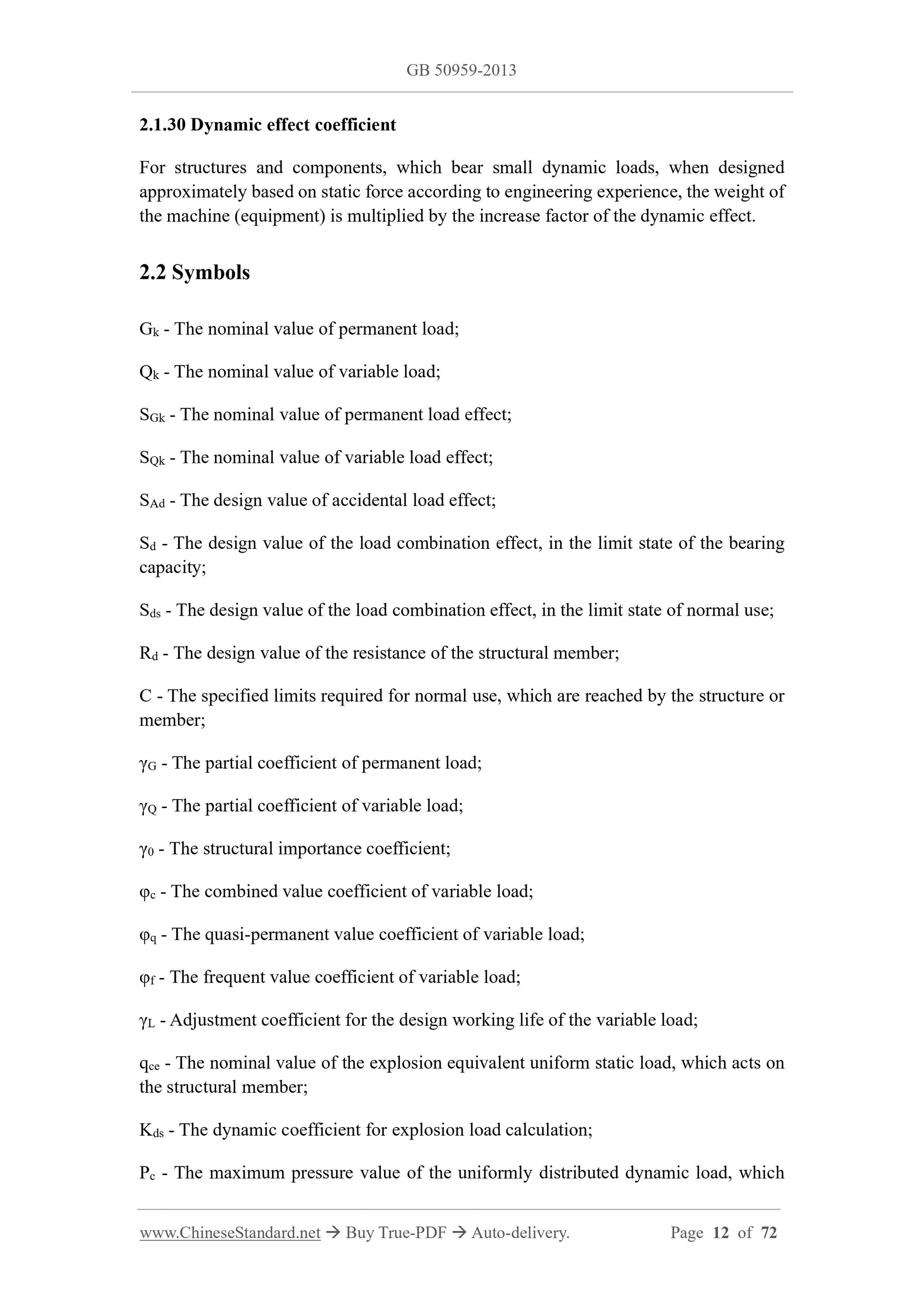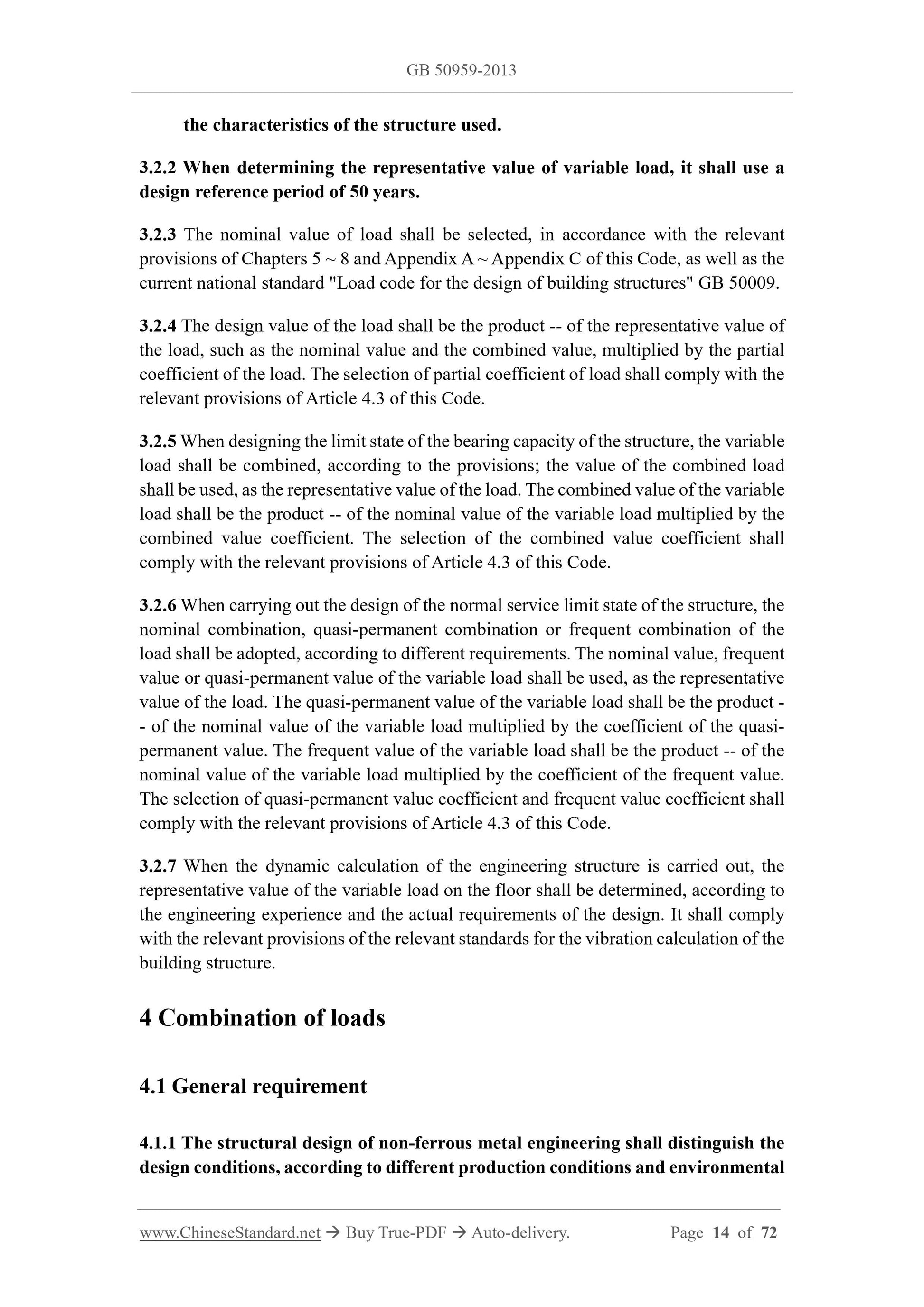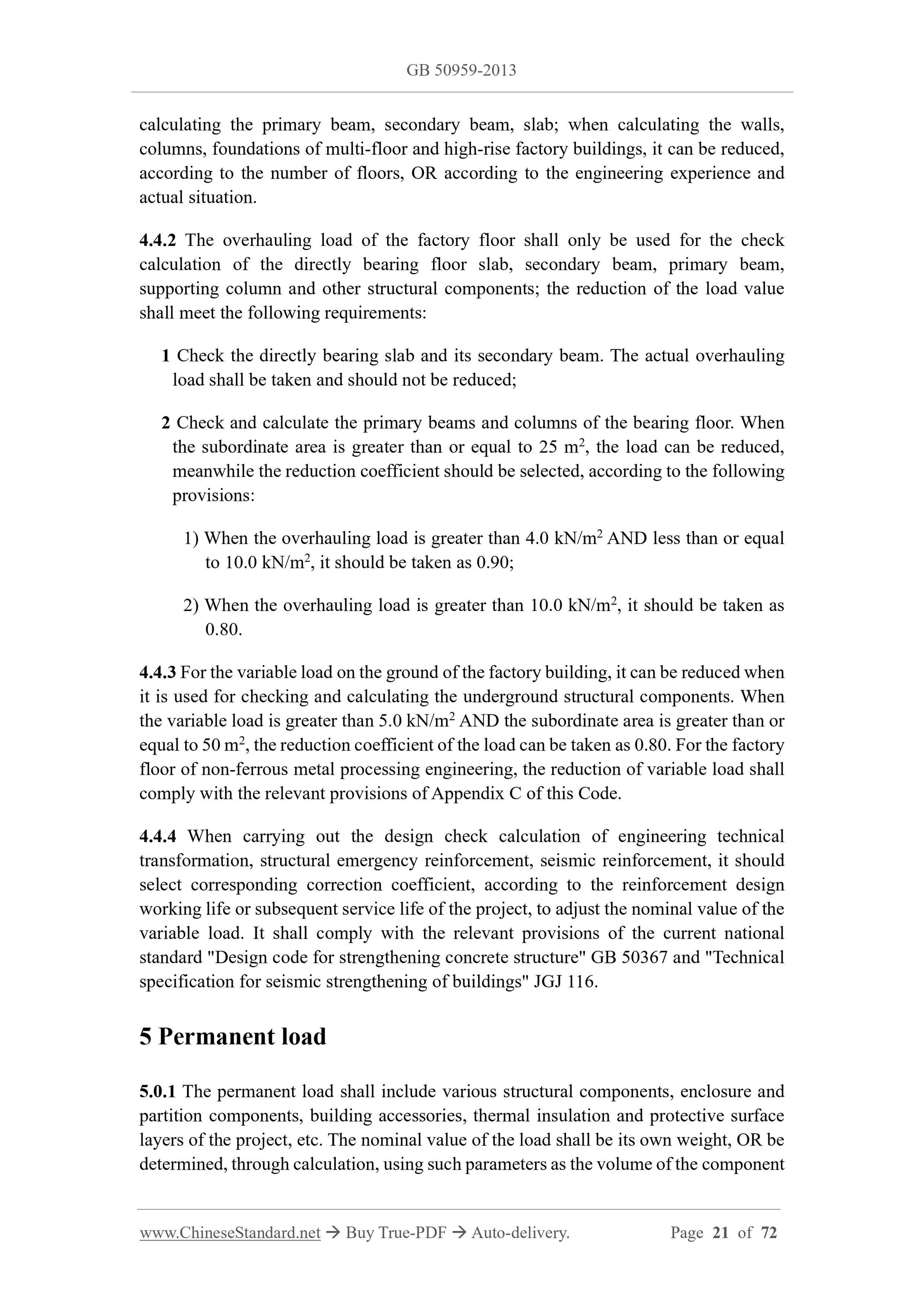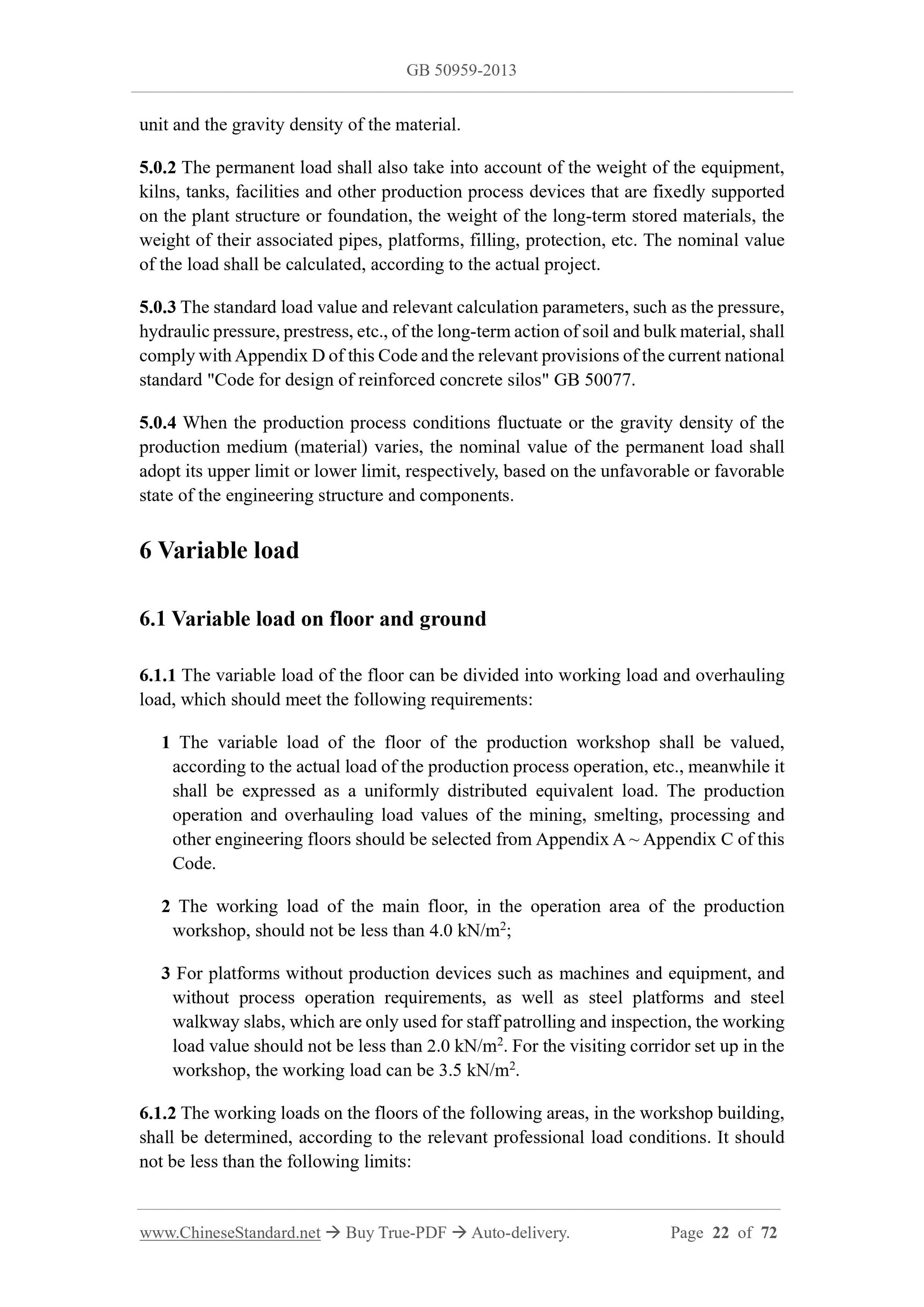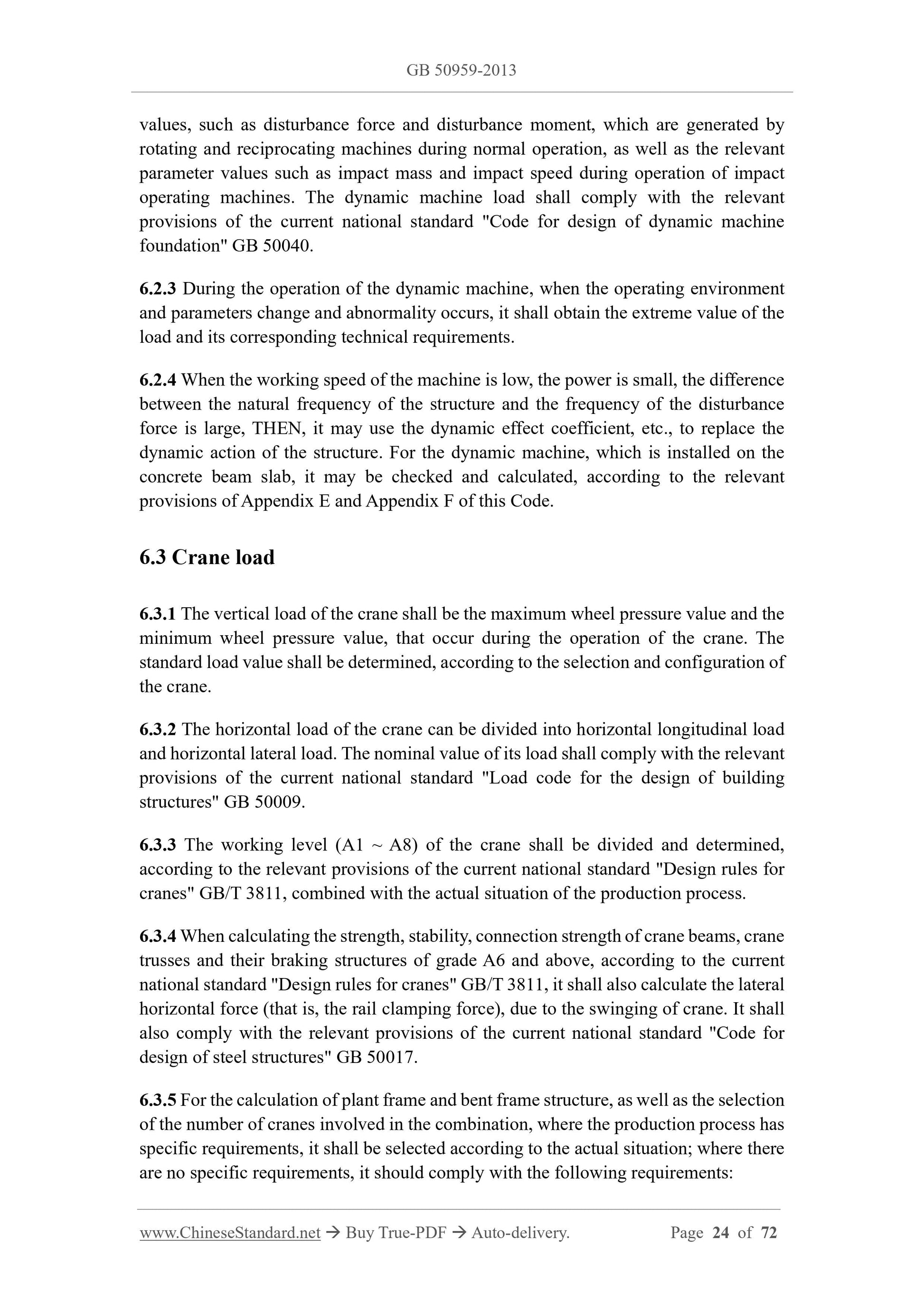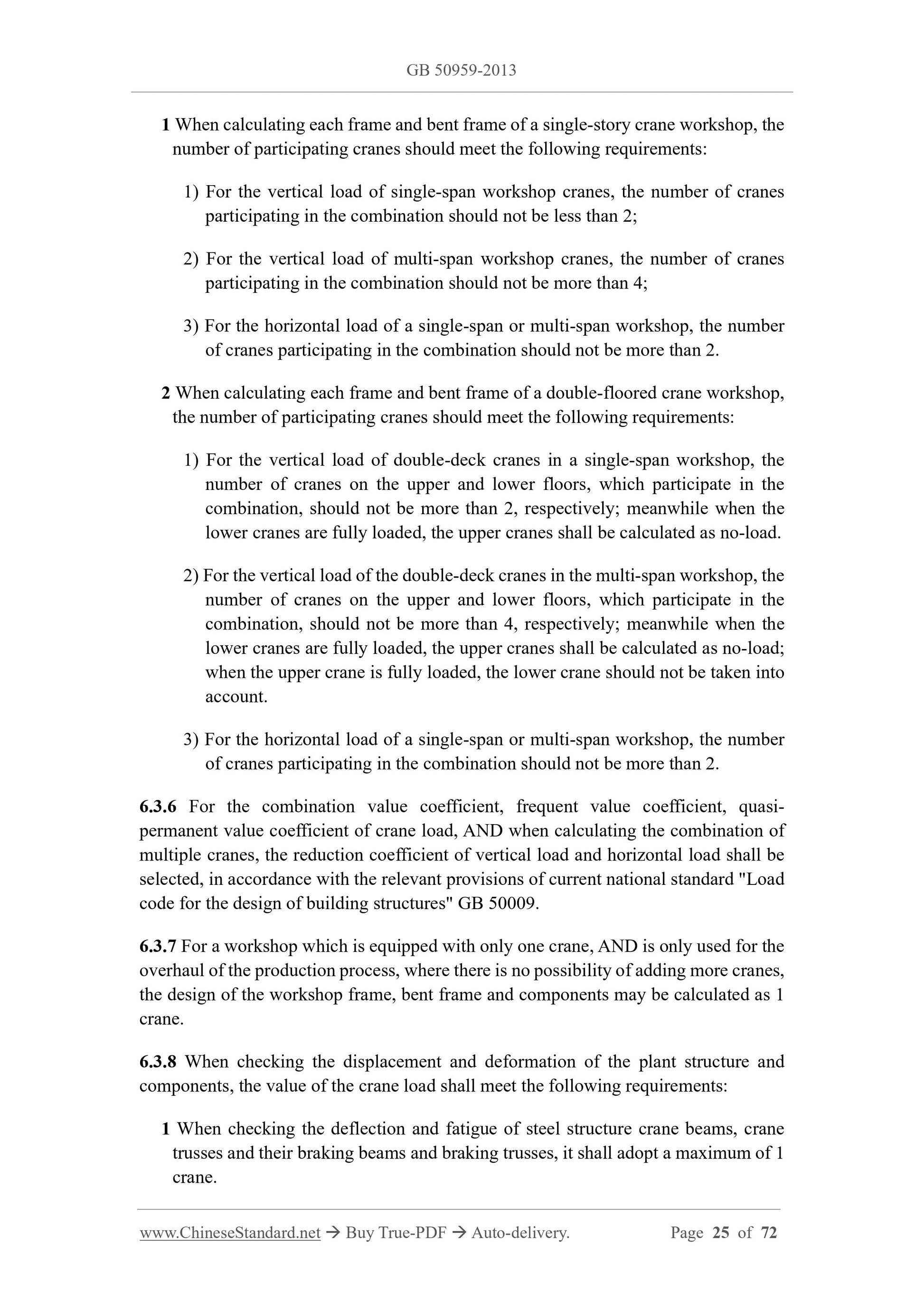1
/
of
12
www.ChineseStandard.us -- Field Test Asia Pte. Ltd.
GB 50959-2013 English PDF
GB 50959-2013 English PDF
Regular price
$1,605.00
Regular price
Sale price
$1,605.00
Unit price
/
per
Shipping calculated at checkout.
Couldn't load pickup availability
GB 50959-2013: Load code of nonferrous metals engineering structures
Delivery: 9 seconds. Download (and Email) true-PDF + Invoice.Get Quotation: Click GB 50959-2013 (Self-service in 1-minute)
Newer / historical versions: GB 50959-2013
Preview True-PDF
Scope
1.0.1 This Code is formulated, in order to meet the needs of non-ferrous metalengineering construction, AND meet the requirements of industrial buildings and
structures, that are safe, applicable, economically reasonable.
1.0.2 This Code is applicable to the structural design of the main works and auxiliary
facilities, for new construction and expansion of non-ferrous metal mining, smelting,
processing projects.
1.0.3 The actions, which are involved in the design of non-ferrous metal engineering
structures, shall include direct actions (i.e., loads) and indirect actions (including
temperature, deformation, etc.). This Code mainly stipulates the direct effect; the
relevant provisions also apply to the indirect effect.
1.0.4 All kinds of loads and actions, which are used in non-ferrous metal engineering
structures, shall not only comply with this Code, but also comply with the current
relevant national standards.
Basic Data
| Standard ID | GB 50959-2013 (GB50959-2013) |
| Description (Translated English) | Load code of nonferrous metals engineering structures |
| Sector / Industry | National Standard |
| Classification of Chinese Standard | P73 |
| Classification of International Standard | 77.010 |
| Word Count Estimation | 126,161 |
| Quoted Standard | GB 50007; GB 50009; GB 50010; GB 50011; GB 50016; GB 50017; GB 50038; GB 50040; GB 50069; GB 50077; GB 50367; GB 50385; GB/T 50476; GB 50544; GB 50661; GB 50753; GB/T 3811; JGJ 116 |
| Regulation (derived from) | Announcement of the Ministry of Housing and Urban-Rural Development, No. 258 |
| Issuing agency(ies) | Ministry of Housing and Urban-Rural Development of the People's Republic of China; General Administration of Quality Supervision, Inspection and Quarantine of the People's Republic of China |
| Summary | This standard applies to non-ferrous metal mining, smelting and processing all kinds of new projects, expansion of the structural design of the main project and ancillary facilities. |
Share
